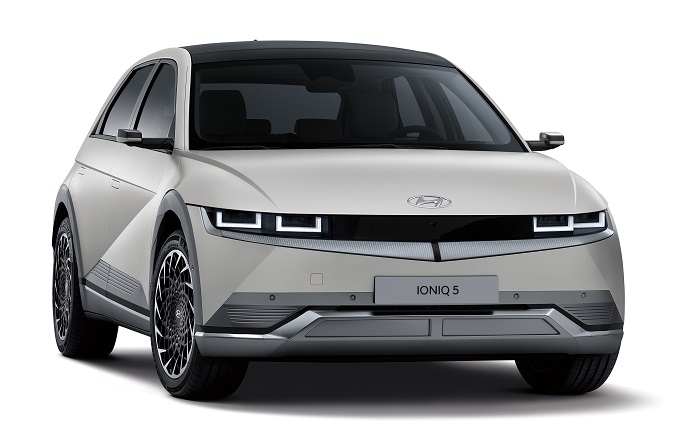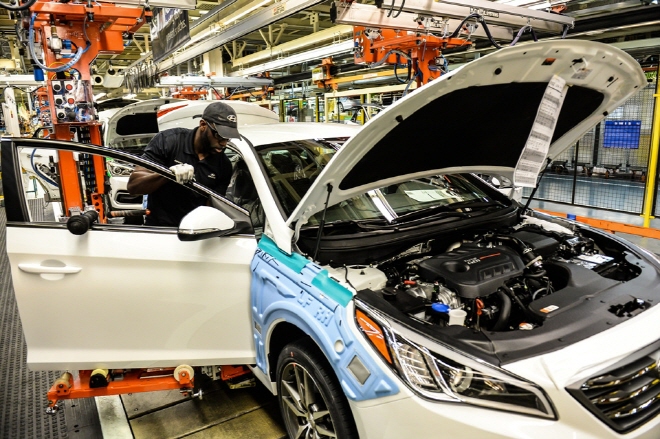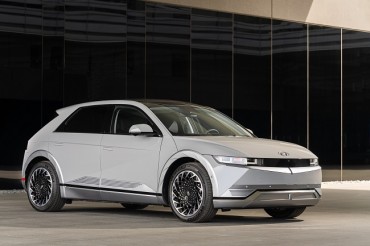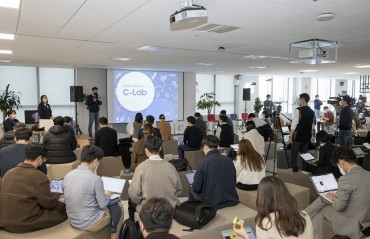SEOUL, May 18 (Korea Bizwire) — South Korean automaker Hyundai Motor Co. has debuted its all-electric Ioniq 5 in hope of catching up with EV leader Tesla, but its ambitious plan could fizzle out this year with delayed production and rapidly drying-up state subsidies, and more recently its labor union’s opposition to its massive investment in the United States.
Hyundai Motor has received about 43,000 preorders for the Ioniq 5 since Feb. 25 but just 114 units were delivered in the first month of its domestic launch in April, according to industry data.
The automaker planned to build 10,000 units last month, but it rolled out only 2,600 units as its Ulsan production line on the southeastern coast was suspended for a week in early April due to a lack of traction motors, an essential part for battery-powered vehicles.
The parts supply issue came at a time when Hyundai and other automakers were forced to halt production earlier this year due to the global semiconductor shortage.
Battery-powered vehicles require a far higher number of chips than the traditional combustion engine cars.
To reduce the waiting time, Hyundai is persuading customers to forgo some advanced features like a parking assist or rear-seat reminder system by offering a price discount and considering other options to retain customers who placed early orders, according to company officials.
“We are considering various options, including giving charging vouchers and other incentives, for customers who receive cars later than expected,” a Hyundai Motor spokesperson said.
“We cannot exactly predict when the Ioniq 5 can be delivered at this point due to uncertainty over the parts supply.”
The slower-than-expected EV rollout raises concerns that latecomers may not be eligible for subsidies from the central and provincial governments allocated for this year.
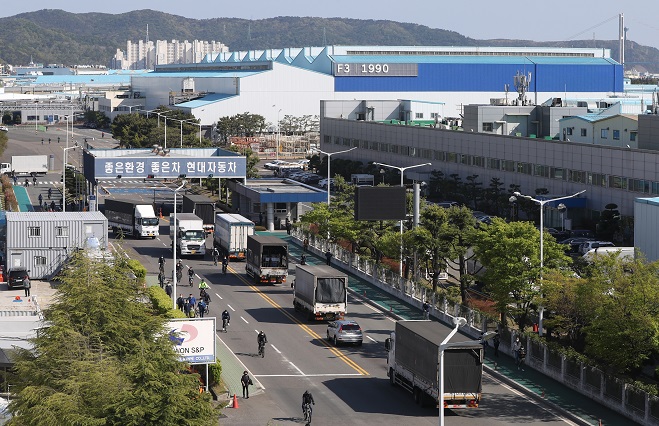
Hyundai Motor Co.’s Ulsan factory, 414 kilometers southeast of Seoul, remains idle on April 14, 2021, due to an automotive chip shortage. (Yonhap)
The subsidy from the central government is 8 million won (US$7,200) for each buyer and subsidies from provincial governments reach up to 11 million won for each buyer.
Under the revised system that took effect this year, vehicles priced below 60 million won are eligible for 100 percent of the subsidies and those priced between 60 million won and 90 million won can get half of the subsidies.
No incentive is available for cars whose sticker prices are over 90 million won.
Given the Ioniq 5 long-range models are priced between 49.8 million and 54.5 million won, customers can purchase the models at the lowest price of 30.8 million won with the subsidies.
However, buyers who receive the vehicle several months later may not be able to get the subsidies offered on a first-come, first-service basis once they are exhausted.
While the Seoul metropolitan government set aside subsidies for 5,067 EV purchases this year, it had received applications for over 80 percent of them as of May 10, while other major cities posted registration rates over 50 percent for this year’s quota, according to the data compiled by the Korea Automobile Manufacturers Association.
A total of 3,265 Tesla’s Model 3 sedans, which is eligible for 100 percent of subsidies, were registered in the first four months of this year, according to the data by industry tracker CarIsYou Data Research Center.
Tesla is set to soon deliver Model Y SUVs to domestic consumers, with its entry trim priced just shy of 60 million won, apparently aiming for the full subsidy. Its long-range model costing below 80 million won can get half of the subsidy.
Industry officials say if the supply issue continues, Hyundai Motor may not be able to achieve its goal of selling 160,000 EVs this year, which was sharply up from 98,000 EVs it sold last year.
Ioniq 5 is the first all-electric model topped with Hyundai Motor Group’s dedicated EV platform, and the automaker plans to introduce the Ioniq 6 midsize sedan in 2022 and the Ioniq 7 large SUV in 2024.
Industry officials say chances are high that the carmakers will continue to suspend their plants in the second quarter as it takes time for their overseas chip suppliers to resume production following natural disasters and fires.
During the first-quarter earnings conference call last month, Seo Gang-hyun, head of Hyundai’s Finance & Accounting Division, said an extended chip shortage would have an impact on the company’s vehicle production and second-quarter earnings bottom line.
Market watchers expected the chip shortage to pose challenges for the automaker in the short term but positively evaluated its EV transition plan in the long run amid the global rush for eco-friendly cars.
To speed up its EV drive, its parent Hyundai Motor Group last week said it will invest $7.4 billion in the U.S. by 2025 to produce EVs, upgrade production facilities and expand investment in smart mobility solutions.
The announcement came before South Korean President Moon Jae-in holds talks with U.S. President Joe Biden in Washington later this week, which are expected to cover closer cooperation in the semiconductor and battery sectors, as well as North Korea and COVID-19 vaccines.
Analysts said Hyundai’s investment plan is aimed at taking a bigger share of the growing U.S. market under the Biden administration’s EV-friendly policies, which call for more chargers, incentives for buyers and more U.S. manufacturing.
“Considering the scope of the investment, Hyundai Motor is expected to step up its EV production capacity in the U.S. by expanding the existing factory and building new production lines,” Yoo Ji-woong, an analyst at eBEST Investment & Securities, said.
Hyundai Motor has its production line in Alabama and its sister company Kia operates a factory in Georgia.
The offshore investment plan, however, is expected to face a tug-of-war with the automaker’s labor union, which is preparing for a battle with management over job security.
EVs require far fewer parts than those with internal combustion engines, which means potentially fewer factory assembly jobs, “potentially posing” issues in work schedule negotiations between the management and the labor union.
On Monday, Hyundai Motor’s labor union criticized the management for unveiling the massive U.S. investment plan ahead of the bilateral summit without enough consultations with employees, calling for more investment on home soil.
“There are so many problems in the overseas production lines due to parts supply issues in the pandemic era. The company should step up its domestic production capacity for high-valued products,” the labor union said in a statement.
“We need new labor relations to develop the new technology and protect job security in the face of a rapidly changing industry landscape.”
(Yonhap)


